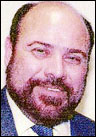Plaintiffs in an employee-based lawsuit against a Midwestern factory used RFID technology to gather data regarding work practices that was then reviewed by an expert witness. The suit charges that workers are not being properly paid for the time they spend donning protective equipment. The case has yet to go to trial.
Last month, the RFID solution was installed at the unnamed factory. The system was operated over the course of 72 hours, and was then removed. During that time, it gathered information about the arrivals and departures of approximately 300 workers over the course of four shifts, comparing each employee’s time on-site against his or her time clocked in. Queralt provided its iQ3 solution for the deployment, consisting of tags, readers and software that tracks the times of each worker’s arrivals and departures at the factory gate, as well as at time clocks. Queralt then analyzed the results, and presented the material to the expert witness for use in court.
The legal action focused on what plaintiffs allege is the company’s breech of fair-labor laws, based on the amount of time on-site that employees spent putting on protective equipment, outside of the time they were officially on the clock. An expert witness for the plaintiffs needed a way to document when workers actually arrived at and departed from the factory, as well as when they clocked in and out. The question was, were they performing work-related tasks while clocked out? Such studies are typically conducted using a variety of tools, such as cameras, stopwatches and often a fleet of individuals watching employees’ comings and goings. In this case, Queralt provided EPC Gen 2 RFID tags for its staff, with readers installed at the factory gate—which serves as both an entrance and an exit—and at time clocks. The plaintiffs’ attorneys hired Queralt to acquire data indicating the amount of unpaid time that employees spend on-site at the beginning and end of each shift.
Queralt conducted the study in May at the unnamed factory. Queralt’s iQ3 solution is designed to be set up temporarily, and to be made operational in a short period of time. Once the readers are installed, they require only an Internet connection, or a USB connection to a laptop with iQ3 software loaded on it. In the case of this factory project, however, Queralt had the additional challenge of providing the solution without any foreknowledge of details about the site, such as the materials of which the building was constructed, where reader antennas could be mounted, or where electrical outlets might be located. The company shipped seven Impinj RFID readers to the site, along with Impinj reader antennas. Dan Romo, Queralt’s senior VP of sales, and John Marchese, the firm’s CTO, then set up the system in the presence of the assigned expert witness and several attorneys. The antennas and interrogators were mounted on walls within the vicinity of the time clocks at which employees punched in, as well as at the front gate. Each reader was cabled to a laptop computer’s USB port, to store and analyze that information.
As workers arrived for their shift, Romo and Marchese requested information from each participating employee, such as his or her name, that person’s job at the plant and the group in which he or she worked. That individual was then assigned a small EPC Gen 2 passive ultrahigh-frequency (UHF) RFID tag that fit in a pocket. (About 80 percent of the employees agreed to participate.) The unique ID number encoded to each tag was linked to the employee’s information in the iQ3 software. The tags were then read as the individuals walked through the gate, and again as each worker punched his or her time card. Although the staff had a tendency to take the tag out and present it to the antenna, that was unnecessary, Marchese says, because the antennas would have captured the ID of the tag in each worker’s pockets.
Queralt brought seven readers to the site, but the expert witness determined that two additional read points were required. Therefore, the hardware was moved several times to accomplish the supplemental reads.
When staff members punched out at the end of a shift, the tags were read twice more—once as each worker clocked out, and again as that person walked through the gate while exiting the plant. The study was conducted through four different shifts during the three-day period (the factory operates 24 hours a day).
At the end of the 72-hour period, Queralt removed the hardware, and the iQ3 software performed analytics for the expert witness. This included the amount of time between an employee’s arrival and punching in, the average times for those in specific work groups or jobs, and the time spent at the end of the shift potentially performing such on-site tasks as removing protective gear after punching out.
The witness, Romo reports, says the data was more thorough than what is typically gathered via manual methods. However, he declines to provide the investigation’s results.


